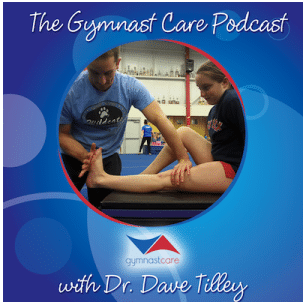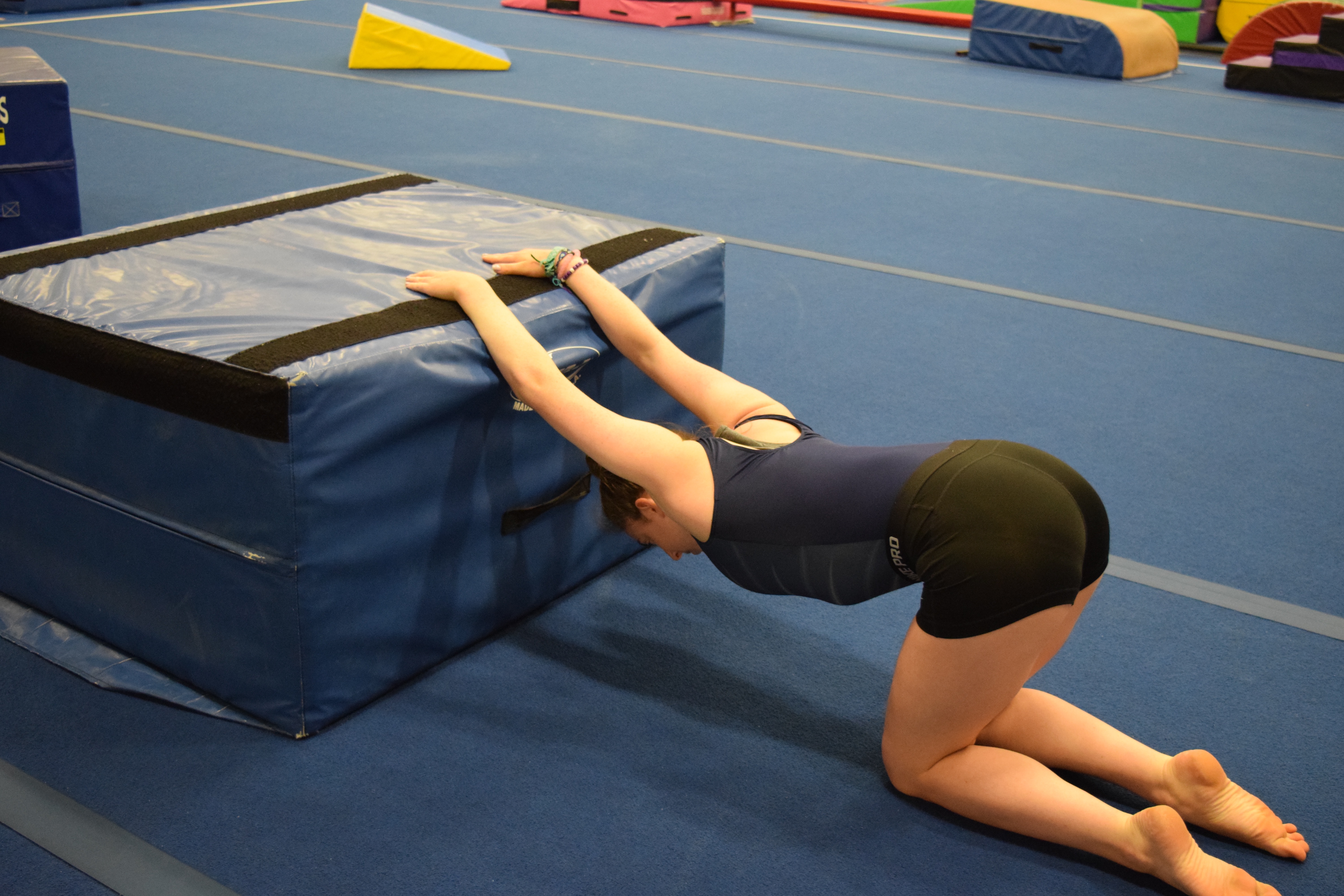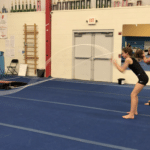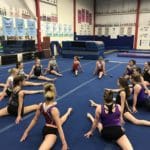10 Quick Tips – Reducing Injury Risk During Gymnastics Season
I’m really excited to be getting back into writing more content in the next few months. I asked a lot of readers what was the most helpful, and one thing they mentioned was “Quick Tip” type blog posts.
People seem to really like being able to jump in an article quick, get a handful of useful tips or information, and then apply them in training right away. Although I think there are some monster topics that need a bit more depth and multiple part blog posts, I definitely want to get more of the quick hits type style out. To help, I’m going to start a “10 Quick Tips” series where I’ll take a topic, and knock out more bullet point takeaways.
Table of Contents
Reducing Injury Risk in Gymnastics Competitive Season
Today I wanted to kick off the first one with how coaches, gymnasts, parents, and medical providers can reduce their injury risk kicking off the competitive season. Over the last 4 seasons of both treating and coaching gymnasts, without fail the months leading up to the competitive season, unfortunately, sparks a large number of injuries.
I have seen a ton of new gymnasts at Champion for overuse type injuries over the last few months as they prepare for the season. Despite our best efforts at our gym, we still have some girls that had small injuries flare up over the last few months. Based off all of this, here are some concepts to consider when getting things started this year.
Before I give some specific ideas, keep in mind that you can download the exact prehab and injury prevention exercises I give to gymnasts in my new free “Gymnastics Pre-Hab Guide” here,
Download SHIFT's Free Gymnastics Pre-Hab Guide
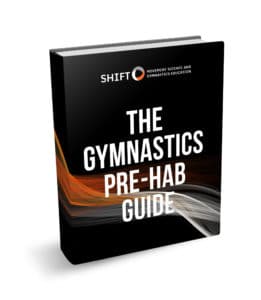
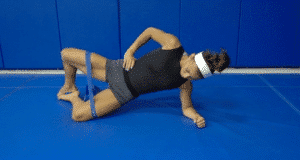
Daily soft tissue and activation exercises
Specific 2x/week Circuits for Male and Female Gymnasts
Descriptions, Exercise Videos, and Downloadable Checklists

- Avoid Sudden Spikes in Training Volume Daily or Weekly
- I’ve touched on this a few times before, but Tim Gabbett and other researchers continue to demonstrate that managing training volume within a day or weeks is incredibly important to reduce injury risk. With the meet season approaching, I know how it feels to want to suddenly do a ton more skill or routine volume to get people ready. But, if we suddenly throw a crazy amount of workload on gymnasts, or if the gymnasts take it upon themselves to do 20 of a skill they don’t have yet multiple days in a row, that sudden spike in training volume can stir up an injury quick.
- Challenge Gymnasts with Physical Preparation, but Do It Intelligently and Based on a Plan.
- Building on the concept above, the same group of researchers have suggested that when properly implemented, appropriate training levels and proper physical conditioning is protective against injury. Just as we don’t want to go too crazy increasing training volume or skills/routines suddenly, we also don’t want to live on the other side of the coin being too nervous about training hard to the point where gymnasts are not adequately prepared for the routines they will be competing. This is where the art and science of coaching collide. Everyone has to be methodical and have a plan to how they approach training, and stick to it even if that means not having every skill/routine ready for the first meet. It’s a long 6-month road, and we have to think ahead.
- Make Sure A Gymnast’s Cardio Matches Their Routine Demand
- It’s absolutely crucial that gymnasts have a baseline level or cardio that can support the demand for floor and bar routines. Trying to push routine cardio and add in all of the new skills to that routine at the same time suddenly can be a recipe for disaster. As I have learned from some great coaches, you can develop endurance in longer skill combination sets without throwing all the hard skills just yet. Holding off for a few weeks on adding new skills to train skeleton sets or do separate cardio circuits specific to routines can drastically reduce the risk of something happening. If you’re looking for some more ideas, check out this blog post I put up last week and this blog post from last year with some of my go-to cardio workout schemes.
- Recovery Matters Just as Much as Training – Sleep, Hydration, Nutrition, Soft Tissue Care, and Stress Management
- Personally, next to continuing to learn more about gymnastics technique itself, this has been my #1 focus to teach our entire girls team. We have worked very hard to change our culture in the last 3 years away from the coaches preaching what our athletes should do, to placing more responsibility in the athlete’s hands about what they need to do to be successful. The best training plan, volume management, and perfect skill technique will go quickly off the rails if athletes are only sleeping 6 hours, not fueling themselves properly, and do not understand that balancing all life stressors (school, family, friends, etc). Improving these areas is wildly important for competition success. Personally, in our gym and in the clinic, there seems to be a clear pattern of success and lack of progress happening in rehabilitation based on the gymnasts who take these concepts to heart.
- Proper Technique, Basics, and Consistency is Protective
- Most gymnastics professionals understand this concept, but it bears repeating just to be safe. The most successful gymnasts, coaches, and gyms I have seen are complete sticklers for requiring basic technique and skill consistency over throwing huge skills. Along with being the path to high-level skills, I also firmly believe as a medical provider this is protective of injury. Gymnasts who can not see the importance of delaying gratification by not competing for a skill until the technique is perfect often are going against advice to make skill correction, and can end up hurt as a consequence. I hate scratching kids from events just as much as the next coach, but in the end, the tough conversation with health as the priority and waiting until is safely / consistently done in practice is more important than being flashy in the few meets of the season.
- Teach Athletes About Expecting Adversity and Building Resilience
- Ray Dalio’s book “Principles” and Ben Bergeron’s book “Chasing Excellence” both highlight fantastic methods for these concepts. The reality of the situation is that gymnastics is unbelievably challenging and that gymnasts will rarely make it through a competitive season without some significant low points to handle. Knowing this, I try the best I can teach athletes about how to approach these situations. We discuss how there are a lot of factors outside of people’s control related to gymnastic success. There are, however, many things they can control such as their attitude, the response to adversity, and the daily behaviors. I strongly feel that teaching these principles contributes to reducing injury risk, as athletes have a more level-headed outlook when approaching challenges from skills, routine , or meet stress. I think one of the best things coaches and parents can do to help their athletes as the season approaches.
- Be Aggressively Proactive about Detecting Injuries Early and Dealing with Them
- Without fail, gymnasts will continue to not speak about their injuries despite coaches or parents trying to help them. This is the worst thing that athletes can do to their own long-term potential, as many times these injuries continue to develop and get much worse than when they started. I to have made this mistake as a younger coach, and I believe that my inability to poke and prod for answers about someone continuing to be sore led to much longer time frames for being out for an injury. Gymnastics inevitably brings soreness, bumps, and bruises along the way. However, a gymnast trying to be hero pushing through ongoing pain despite advice is one of the easiest ways to miss an entire season. I suggest keeping an open dialogue about these things and make sure everyone is on the same page for what needs to be done should an injury start to pop up.
- Be on the Look Out for Growth – Talent Crossroads
- Each year, the most common pattern of injury is a younger gymnast who seems to be at the intersection between a rapid growth spurt and a jump in competition level. Many gymnasts between the age of 11 and 14 have sudden spikes in their development leading to open growth plates that have a reduced ability to handle loading. When this time period intersects with a jumping level, it often brings much more demanding skills, many more hours in the gym per week, and a higher number of skill competitions needed for routines. I believe that looking out for this intersection is one of the most important ways to reduce injury risk. Catching something sparking early can sometimes mean exchanging 2 weeks of reduced training volume, and in the end gain back months of competing because of an injury didn’t snowball.
- Understand The Most Common Injury Spots
- Knowledge is most definitely power in this category. The sport has changed significantly in the last 10 years, and with it comes a new spread of common injuries to look out for.
- For female gymnasts the most common sites are
- Lower back pain with repetitive extending skills and impacts
- Elbow pain with repetitive impact skills
- Knee/Ankle pain during landings
- For male gymnasts the most common sites are
- Shoulder pain from ring, high bar, and pbar skills
- Wrist pain from high volume of pommel and above bar support skills
- Knee/Ankle pain with landings
- Always Remember to Enjoy The Ride
- This is a bit more on the personal philosophy side of gymnastics. But, it always seems to me that once the main focus of trading becomes way too competitive and loses the fun part of being in a positive community and working to be better, young gymnast becomes extremely overstressed and burnt out. I believe this reduces their ability to handle training loads, recover from hard workouts, and allows the mental game to slip to the point where it elevates injury risk. I have seen incredible facilities where expectations and training requirements are held to a high standard, but there is still a large element of enjoyment from all the kids. I think we should all strive to produce these environments. I think it strikes the perfect balance of elevating gymnastics performance but also reducing risk.
With that, I’m going to wrap things up. Hopefully, that helps people get some of the simple points from the last few years of researching and working with many gymnasts. I wish everyone the best of luck as they start their competitive season! Take care,
Dave Tilley DPT, SCS, CSCS
CEO/Founder of SHIFT Movement Science


